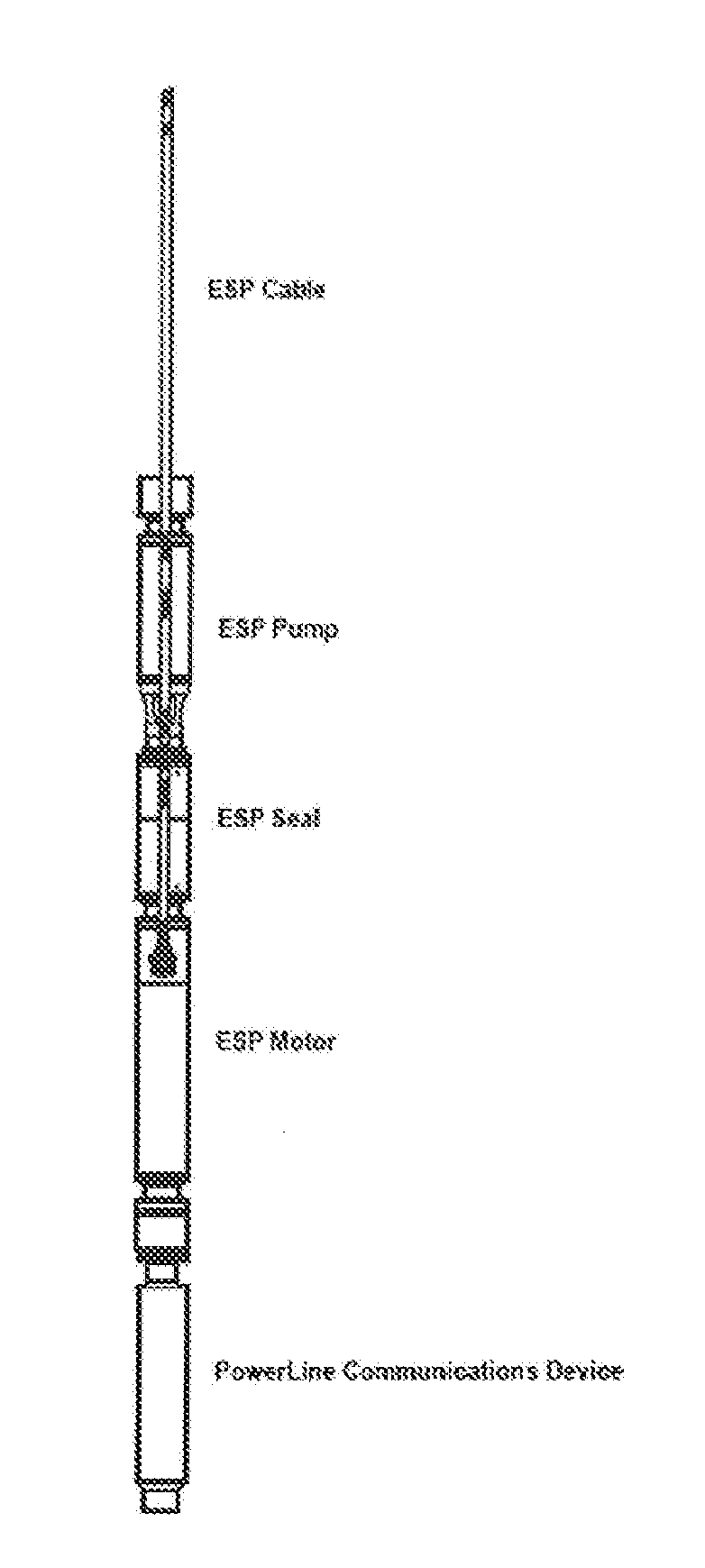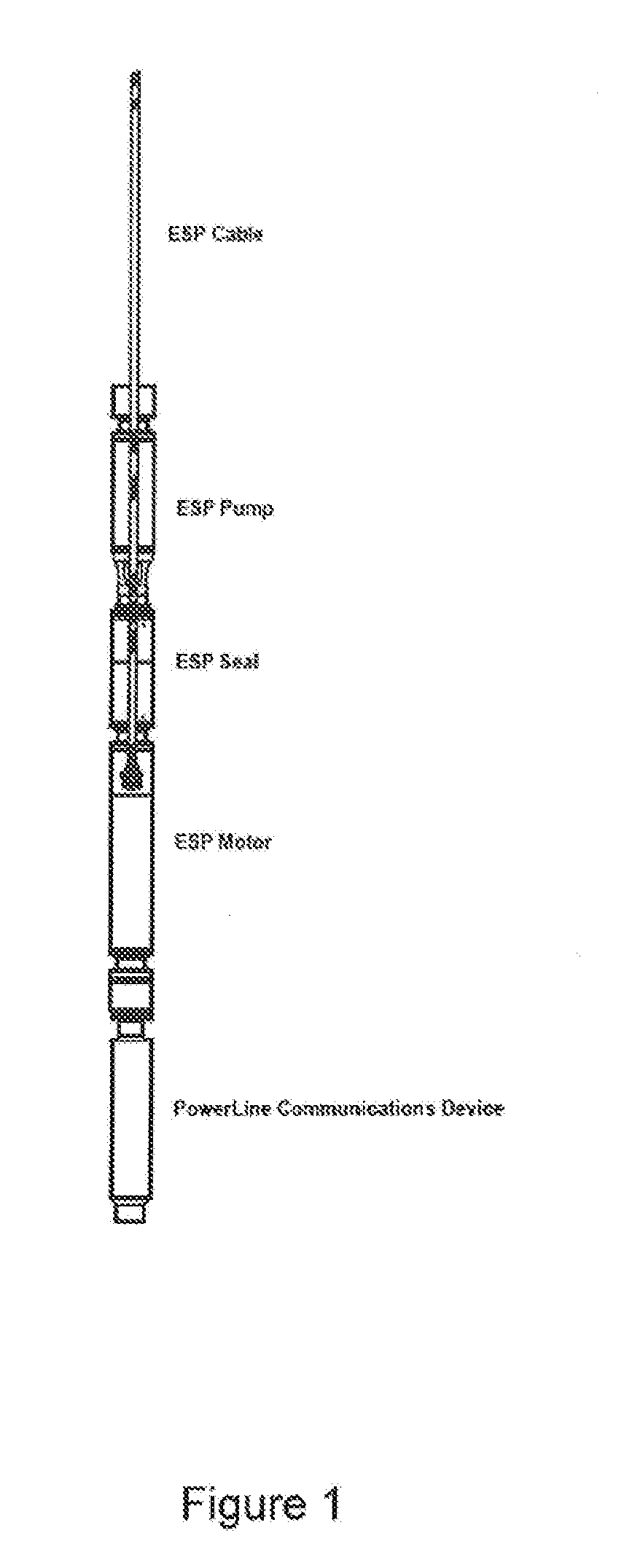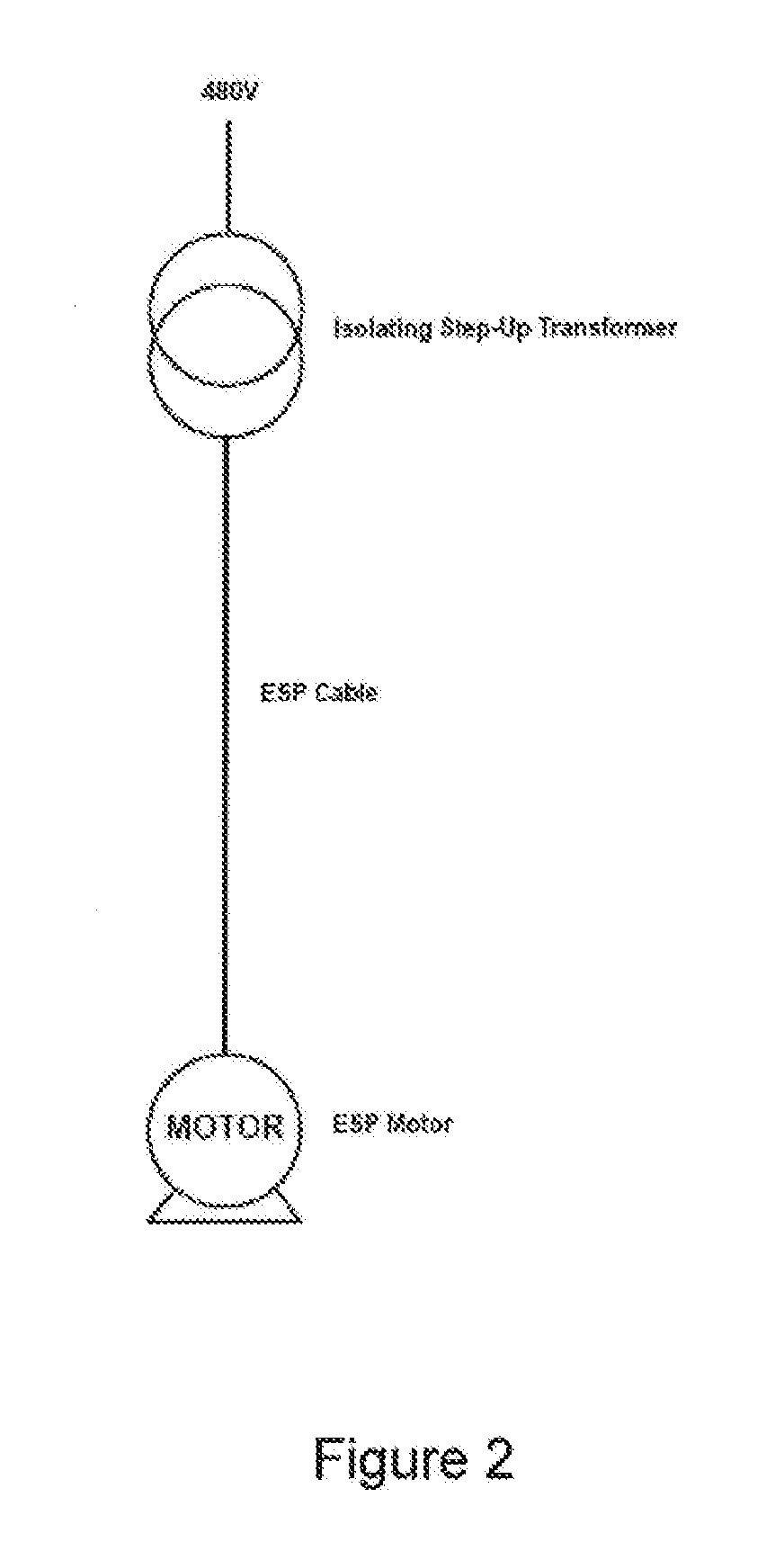Powering an esp sensor using ac current
- Summary
- Abstract
- Description
- Claims
- Application Information
AI Technical Summary
Benefits of technology
Problems solved by technology
Method used
Image
Examples
Embodiment Construction
[0033]FIG. 6 shows an isolated electrical submersible power system. The power system has three phases: phase A, phase B and phase C. A three phase isolating step up transformer is connected via a three phase cable to a three phase electrical submersible power motor. The system is designed such that, in use, the step up transformer is located above ground and the motor operates down-hole, below ground.
[0034]The step up transformer is represented in FIG. 6 by a neutral point 10 and three secondary windings 12. Each secondary transformer winding 12 has one terminal connected to the transformer neutral point 10 to form a star or wye configuration and a second terminal connected to a phase of the ESP cable.
[0035]The ESP motor is represented by three ESP motor windings 14 and an ESP motor neutral point 16. All three phases of the ESP cable extend down-hole and are connected to the three windings 14 of the ESP motor. This arrangement allows each winding 14 of the motor to be driven by alte...
PUM
 Login to View More
Login to View More Abstract
Description
Claims
Application Information
 Login to View More
Login to View More - R&D
- Intellectual Property
- Life Sciences
- Materials
- Tech Scout
- Unparalleled Data Quality
- Higher Quality Content
- 60% Fewer Hallucinations
Browse by: Latest US Patents, China's latest patents, Technical Efficacy Thesaurus, Application Domain, Technology Topic, Popular Technical Reports.
© 2025 PatSnap. All rights reserved.Legal|Privacy policy|Modern Slavery Act Transparency Statement|Sitemap|About US| Contact US: help@patsnap.com



